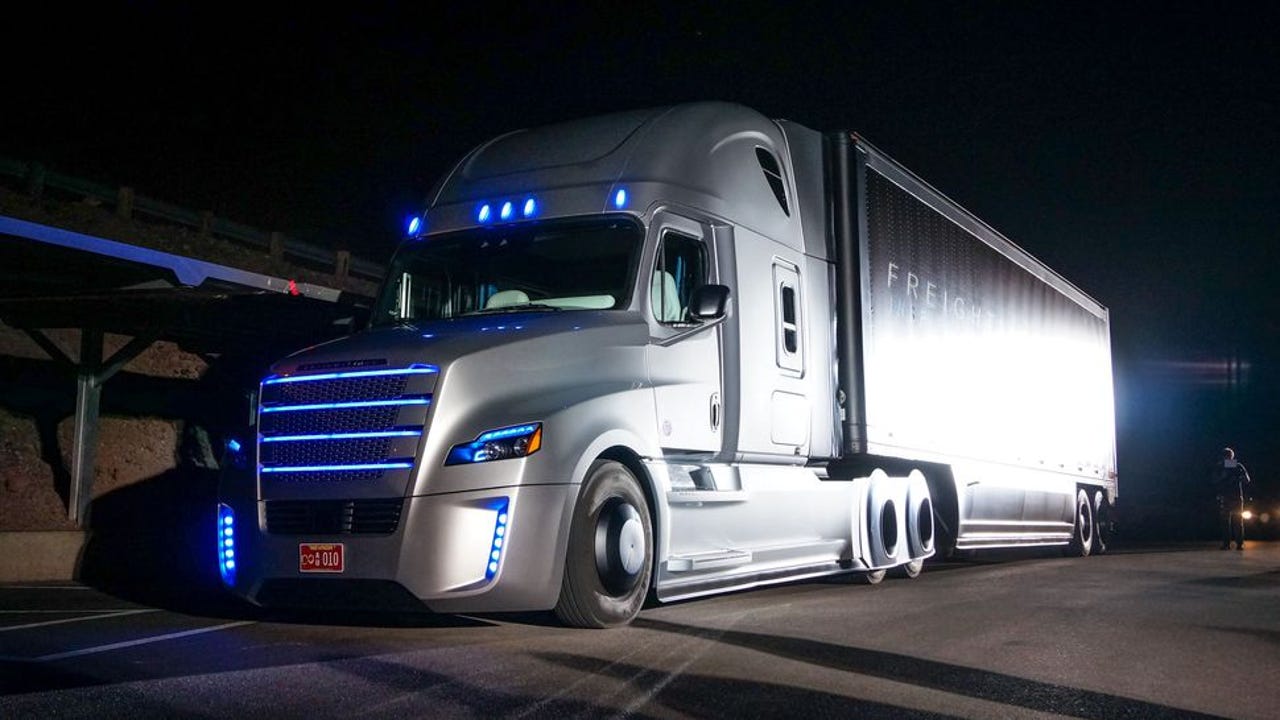50,000 drivers needed: Can technology save the trucking industry?


The trucking industry has a big problem: Millennials don't want to drive trucks.
As a result, the industry could be short 50,000 drivers by the end of the year.
That's according to Bob Costello, chief economist for the American Trucking Association (ATA), who this week presented findings from a report on the driver shortage.
"We experienced a freight recession last year, which eased the pressure on the driver market," Costello said. "Now that freight volume's accelerating again, we should expect to see a significant tightening of the driver market."
The shortage comes as truck manufacturers are accelerating development of autonomous or semi-autonomous vehicles. If you've read any headlines about trucking recently, they've probably heralded the coming of the autonomous fleet.
Peterbilt and Freightliner are both developing self-driving technology for their tractor-trailers, as are a number of startups, such as Embark and Otto, which was purchased by Uber last year and is now part of the company's Advanced Technology's Group.
Elon Musk is set to unveil Tesla's electric semi in late October.
Freightliner received the first-ever license to test a semi-autonomous truck on the highway a few years ago, and just a few days ago a truck became the first autonomous vehicle cleared for regular use on an American highway--albeit at slow speeds.
It's certainly a ripe market for early adoption of autonomous technology. The American economy relies heavily on trucks, which move 10.5 billion tons of goods each year. The industry employs about 3.5 million drivers.
At the same time, congestion costs the trucking industry more than $63 billion each year. There are also around 4000 deaths and 10,000 injuries attributed to trucks each year, with drivers faulted in the majority of cases. Autonomous vehicles could mitigate both problems.
Still, the shift will likely happen in phases, and fully autonomous trucks face stiff regulatory roadblocks.
I reached out to Brian Fielkow, president of Jetco Delivery and author of the book Leading People Safely, for some industry insight.
"Even though the technology is clearly here for self-driving trucks, I do not see self-driving trucks decreasing the demand for professional drivers any time soon."
Fielkow envisions a rollout where technology gradually augments the human driver, making trucking safer and more efficient. Uber's trucking solution, for example, still utilizes the driver for maneuvering off-highway and in high traffic situations, but automates the long lonesome highway portions of the trip.
"Tomorrow's professional truck driver may be analogous to an airplane pilot, where the much of the function is automated but the human element still is critical."
Fielkow does see technology as a possible way to alleviate the driver shortages, however. That's because new technology in the cockpit may take strain off long hauls and make the job more comfortable.
"Technology, including advances that we cannot even see today, will continue to make trucking more efficient and safer. It will create a new experience for tomorrow's driver, and I hope that will be a breakthrough for our industry's ability to attract new drivers."